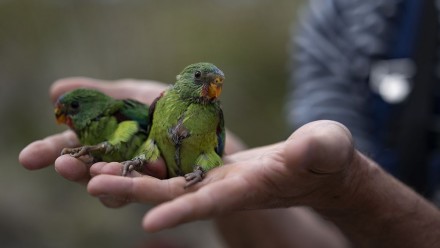Aboveground-Belowground Linkages and Ecosystem Functioning
All terrestrial ecosystems consist of communities of aboveground and belowground organisms, which interact with each other over short time scales, but which both drive and respond to processes that operate over much longer time scales, including those that are relevant to ecosystem biogeochemistry. Here I illustrate the linkage between short-term interactions between aboveground and belowground biota, and long-term biogeochemical processes, through four examples that involve contrasting temporal scales.
The first example shows how invasion by rats on offshore islands in New Zealand has impacted on plant-soil linkages and nutrient cycling and supply rates over the order of several decades. The second example demonstrates, for a group of lake islands in northern Sweden that differ greatly in fire history, that time since disturbance is a powerful driver of plant-microbe associations which in turn drive ecosystem carbon storage and nitrogen (N) and phosphorus (P) cycling over centuries to millennia. The third example involves ecosystem ‘retrogression’, which is the process through which nutrient availability and thus ecosystem processes decline over geological time scales as a consequence of both abiotic and biotic factors. The fourth example involves elevational gradients in mountains that have developed over geological time. It shows how long-term variation in temperature across each of several temperate elevational gradients around the world impact on plant N:P stoichiometry through its impact on soil processes over the geological timescales.
In combination, these four examples highlight that understanding aboveground-belowground linkages offer many insights about the abiotic and biotic drivers of ecosystems.
This event is free and open to the public.
About the speaker
Professor David Wardle obtained a BSc (honours) degree in botany in 1986 at the University of Canterbury in New Zealand, and a PhD in soil ecology in 1990 at the University of Calgary in Canada. He is currently Professor of Forest Ecology at the Asian School of the Environment at Nanyang Technological University in Singapore. His research explores the links between aboveground and belowground communities, and how these in turn drive the functioning of terrestrial ecosystems. A large proportion of this work is field based and in natural ecosystems, including forested ecosystems around the world as well as subarctic and subalpine tundra. He has authored two books on aboveground-belowground linkages, and around 350 peer-reviewed publications of which over 25 have appeared in Science and Nature. He has been consistently designated as a highly cited scientist and as among the world’s 20 most cited scientists in ecology and environmental sciences, is an elected Fellow of the Royal Society of New Zealand and a Wallenberg Scholar, and has received numerous awards (most recently the 2018 Eminent Ecologist Award from the Journal of Ecology).










